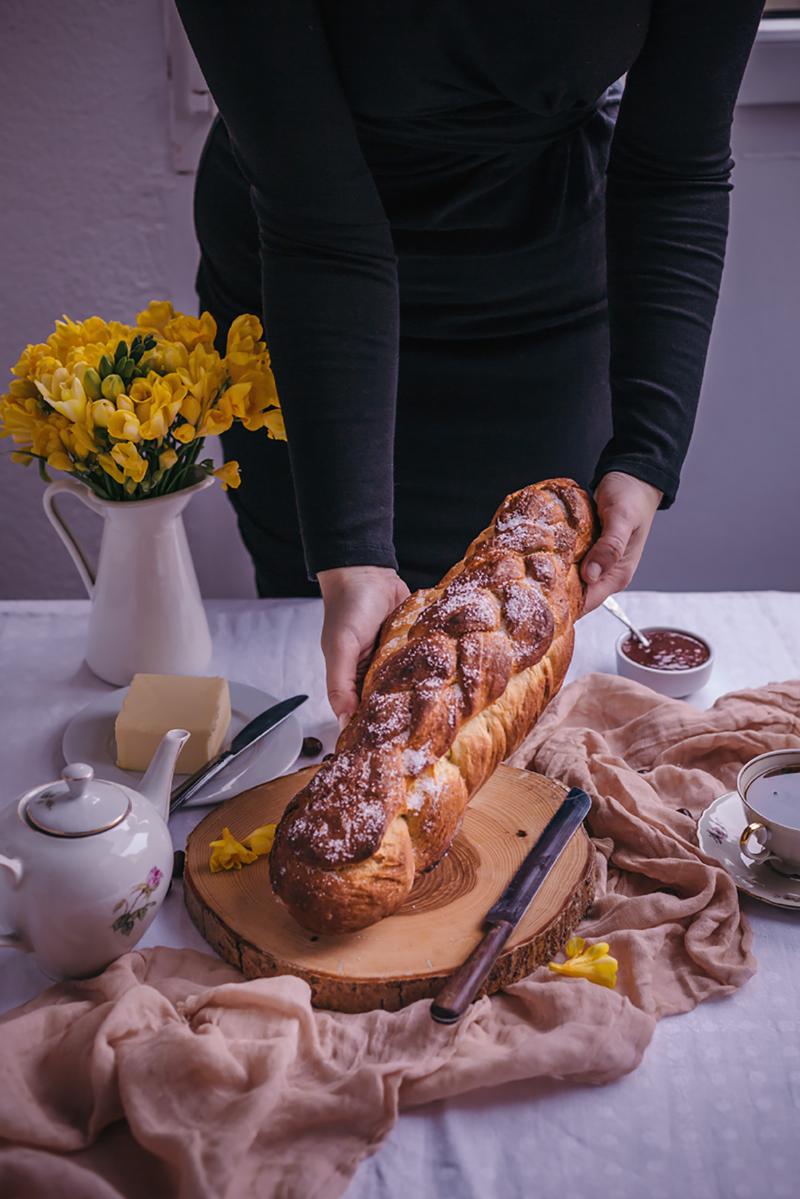Easter is a time for celebration, family, and of course, delicious food. And what better way to celebrate than with a beautiful, fragrant Easter bread studded with colorful eggs? This guide will walk you through a classic Easter Bread Recipe With Eggs, sharing tips and techniques to help you create a centerpiece-worthy loaf that tastes as good as it looks.
Table Of Contents
Understanding the Magic of Easter Bread
Easter bread, in its many forms, is a tradition across cultures. From the Greek Tsoureki to the Italian Pane di Pasqua, these sweet, enriched breads symbolize new life and the arrival of spring. The addition of colorful eggs nestled within the dough adds a festive touch, making it a truly iconic Easter treat. Making Easter bread can seem daunting, but with the right guidance, you’ll discover it’s a rewarding experience. This recipe focuses on a simple yet elegant version that is perfect for both novice and experienced bakers.
Ingredients for Your Easter Bread with Eggs
- 4 cups all-purpose flour, plus more for dusting
- 1/2 cup granulated sugar
- 2 1/4 teaspoons (1 packet) active dry yeast
- 1 teaspoon salt
- 1 cup warm milk (105-115°F)
- 1/4 cup unsalted butter, melted
- 2 large eggs, plus 4-6 hard-boiled eggs, dyed
Step-by-Step Instructions: Crafting Your Easter Bread
-
Activate the Yeast: In a large bowl, combine the warm milk and yeast. Let stand for 5-10 minutes until foamy. This step is crucial for a light and airy bread. If your yeast doesn’t foam, it’s likely inactive and you’ll need to start with a fresh packet.
-
Combine Dry Ingredients: In a separate bowl, whisk together the flour, sugar, and salt.
-
Mix Wet and Dry Ingredients: Add the melted butter and 2 eggs to the yeast mixture. Gradually add the dry ingredients to the wet ingredients, mixing with a wooden spoon or a stand mixer fitted with a dough hook until a shaggy dough forms.
-
Knead the Dough: Turn the dough out onto a lightly floured surface and knead for 8-10 minutes until smooth and elastic. The dough should spring back when you gently poke it with your finger. If using a stand mixer, knead for 5-7 minutes.
-
First Rise: Place the dough in a lightly oiled bowl, turning to coat. Cover the bowl with plastic wrap and let rise in a warm place for 1-1.5 hours, or until doubled in size.
-
Shape the Dough: Punch down the dough to release the air. Divide the dough into three equal pieces. Roll each piece into a long rope, about 18 inches long.
-
Braid the Dough: Braid the three ropes together, tucking the ends under. Place the braided loaf on a baking sheet lined with parchment paper.
-
Nestle the Eggs: Gently press the dyed hard-boiled eggs into the braid, spacing them evenly.
-
Second Rise (Proofing): Cover the loaf loosely with plastic wrap and let rise for another 30-45 minutes, or until almost doubled.
-
Bake: Preheat oven to 350°F (175°C). Brush the loaf with an egg wash (1 egg beaten with 1 tablespoon of water) for a golden brown crust. Bake for 30-35 minutes, or until golden brown and the internal temperature reaches 190°F (88°C).
 Freshly Baked Easter Bread with Colorful Eggs
Freshly Baked Easter Bread with Colorful Eggs
- Cool and Enjoy: Let the bread cool completely on a wire rack before slicing and serving.
Tips for Baking the Perfect Easter Bread with Eggs
- Use high-quality ingredients for the best flavor.
- Don’t skip the kneading step! It’s essential for developing gluten and creating a soft, chewy texture.
- If your kitchen is cold, you can create a warm environment for rising by placing the dough in a slightly warm oven (turned off) with a bowl of hot water.
Conclusion: Enjoy Your Easter Bread Masterpiece
Baking Easter bread with eggs is a labor of love, but the result is a truly special treat that embodies the spirit of the holiday. With this simple recipe and detailed guide, you’re well on your way to creating a delicious and beautiful Easter bread that your family and friends will adore. Now, gather your ingredients, put on your apron, and enjoy the process of creating this festive masterpiece!
FAQs about Easter Bread with Eggs
- Can I use bread flour instead of all-purpose flour? Yes, bread flour will result in a slightly chewier bread.
- How long does Easter bread last? Store leftover bread in an airtight container at room temperature for up to 3 days.
- Can I freeze Easter bread? Yes, you can freeze the baked bread for up to 2 months. Thaw overnight at room temperature before serving.
- What other types of eggs can I use? You can use any type of dyed hard-boiled eggs, such as quail eggs or wooden eggs for decoration.
- Can I add other ingredients to the dough? Feel free to add citrus zest, raisins, or dried cranberries to the dough for extra flavor.
- My dough isn’t rising, what should I do? Check the expiration date on your yeast. Ensure your milk is the correct temperature, not too hot or too cold.
- Can I use a different braiding technique? Absolutely! Get creative with different braiding techniques for a unique look. There are plenty of resources online demonstrating various braiding styles. For a different take, you could try a simple wreath shape.
